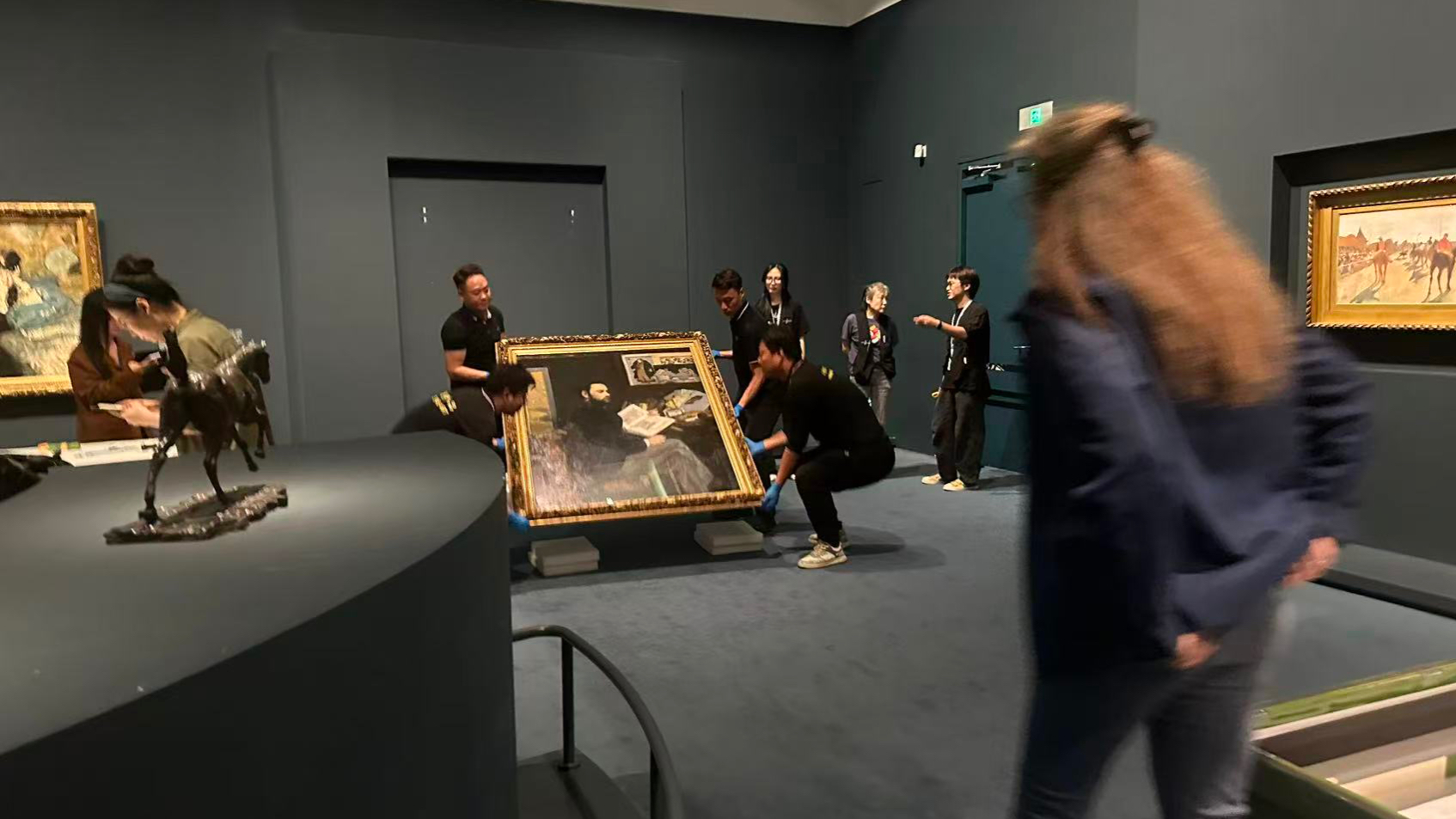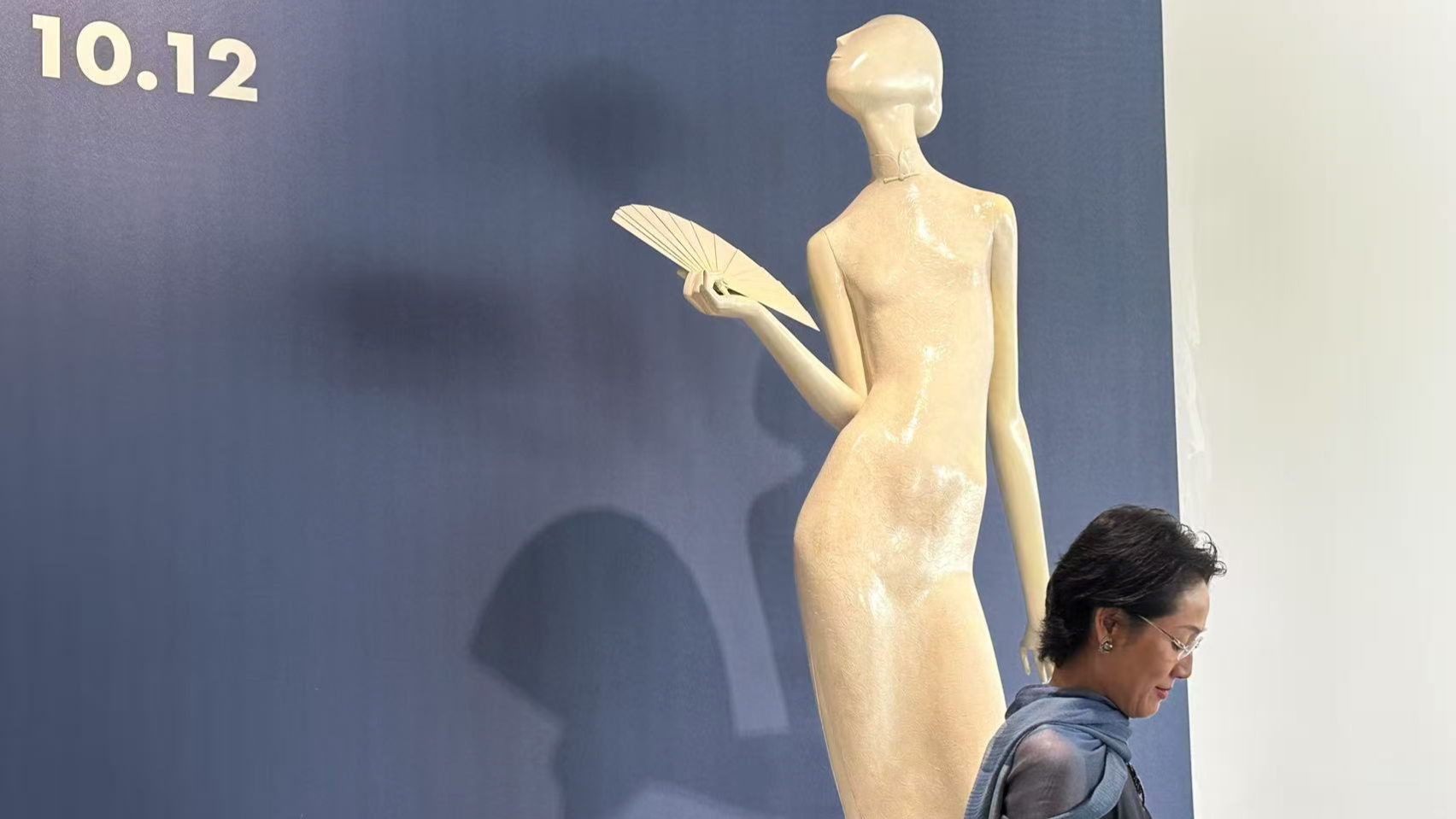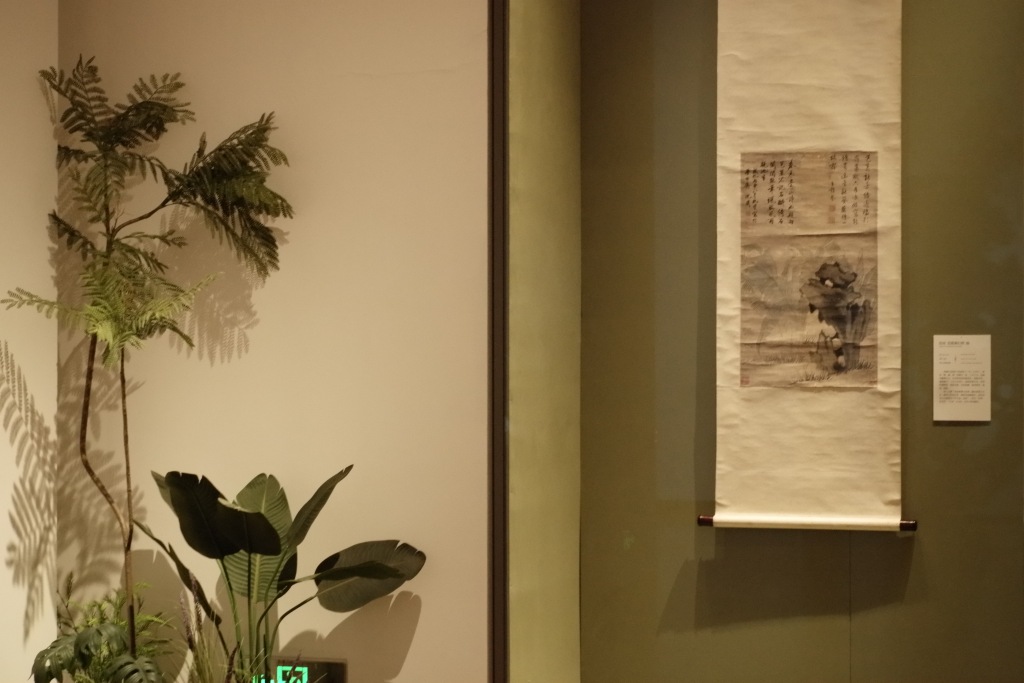

Late in the evening of October 12th, as the last visitor exited the doors, the Shanghai Pudong Art Museum concluded its day. However, the exhibition hall "Creating Modernity: Art Treasures from the Musée d'Orsay in Paris" was bustling with activity. Seven works from the exhibition, including Renoir's "Girl at the Piano" and Manet's "Emile Zola," were slowly removed from the walls and departed Shanghai for the National Museum of Western Art in Tokyo, Japan, as originally planned.
Many visitors who chose to visit the exhibition on October 11 and 12 came for the works that were about to be released, and said that they had caught up with the full version of the Orsay exhibition - which will be postponed until its closing date of October 26.

On the evening of October 12, in front of the two Manet works, "Emile Zola" on the right, which was removed from the exhibition late at night on the 12th, attracted more viewers.
Even after 10 p.m. on October 12th, the Pudong Art Museum's "Orsay Exhibition" remained packed, with many visitors flocking to see the works that were about to be released. A reporter from The Paper observed that seven works, including Manet's "Emile Zola," had significantly more visitors lingering before them than any other works. According to statistics, over 10,000 people visited the museum on October 12th, and nearly 15,000 on the 11th. Due to the overwhelming number of visitors, the museum, originally closing at 11 p.m., was extended by one hour to midnight on the 11th.

On the evening of October 12, the audience in front of Renoir's "Girl at the Piano"
"I went to the Musée d'Orsay in Paris during the National Day holiday and saw that many of the works were being moved to Shanghai. When I learned that seven of them were leaving, I took advantage of the last day to see the entire Musée d'Orsay," said Mr. Ma, who works in the IT industry. He left the exhibition hall almost at closing time.
It is reported that "Creating Modernity: Art Treasures from the Musée d'Orsay in Paris" has attracted over 800,000 visitors since its opening. As the largest exhibition ever held by the Musée d'Orsay in China, it brings together over 100 of the most representative masterpieces of Western art from the 1840s to the early 20th century, including Van Gogh's "Bedroom in Arles" and "Self-Portrait," Millet's "The Gleaners," Gauguin's "Women of Tahitian" (The Gleaners), Monet's "Meules, Late Summer," and Cézanne's "Portrait of Madame Cézanne." The exhibition covers almost all of the major schools in the Musée d'Orsay's collection, including academic, academic, realist, naturalist, impressionist, neo-impressionist, post-impressionist, and Nabis.

Exhibition view, Henri Fantin-Latour's The Dubourgs
The exhibition was originally scheduled to close on October 12th. In response to the enthusiasm of citizens and tourists, the Pudong Art Museum, after contacting the Musée d'Orsay, extended the exhibition period to October 26th. However, due to scheduling reasons, Auguste Renoir's "Girl at the Piano", Edouard Manet's "Emile Zola", Claude Monet's "Mrs. Louis-Joachim Gordibert", Henri Fantin-Latour's "The Dubourgs", James Tissot's "Portrait of Mademoiselle LL", Alfred Stevens' "The Bathers", and Auguste Renoir's "Woman Reading" were removed from the exhibition as originally planned.

In the early morning of October 13, staff at the Musée d'Orsay were checking the status of Claude Monet's "Lady of Louis-Joachim Gaudíbert" before it was packed.
During the interview, the reporter from The Paper found that the audience had almost no time to communicate with each other. Most of them were focused on looking at the paintings. Some even brought folding stools and lingered in front of the paintings.

Henri Fantin-Latour's The Dubourgs
When I saw Manet's "Emile Zola" again, I couldn't help but think of the opening of the exhibition in mid-June. The late Sylvain Amick, president of the Musee d'Orsay, and the curator of this exhibition, French art historian Stephane Guegan, mentioned this work in interviews with "The Paper | Art Review".

Manet's "Emile Zola" was removed from the wall.
In Manet's painting, Zola wears a suit, a modern-day attire. The books and quill indicate Zola's authorial identity, while the background is rich with meaning: Manet's "Olympia," Japanese ukiyo-e prints, Asian folding screens, and Velázquez prints. "The past, foreign cultures, and modern art are all presented together in this painting," Amick told The Paper at the time. They symbolize an open cultural attitude and foreshadow the diverse sources of modern art.

Exhibition view, Edouard Manet's "Emile Zola"
In Amick's eyes, Zola of the 19th century was not only at the center of his time, but through his writing and ideas, he profoundly participated in and reshaped that era. "He truly lived his time. He was not just a writer, but also a social observer and a voice of realism. He spoke for the grassroots and fought for the truth. He was a man who actively contributed to social transformation. This portrait truly represents the concept of 'modernity.'"

Manet, Emile Zola (detail), 1868
Curator Gueguin noted that this work symbolizes the friendship between Zola and Manet. Zola repeatedly spoke out for Manet, who was rejected from the Salon. Zola admired Manet for his sincerity, clarity, and realism. He felt a deep affinity between his own novelistic philosophy and Manet's painterly approach. The following year, Manet presented this portrait to Zola as a token of his gratitude.

Manet's "Emile Zola" is packed in a box.
"The painting also symbolizes another aspect of their aesthetic stance and common struggle – that French realism was inspired by Spanish art on the one hand and influenced by Oriental painting on the other," said Guegan.

On the evening of October 12, visitors gathered in front of James Tissot's "Portrait of Mademoiselle LL," Alfred Stevens' "The Bathers," and Monet's "The Wife of Louis-Joachim Gaudbert."
In the same exhibition hall, James Tissot's "Portrait of Mademoiselle LL," Alfred Stevens' "The Bathers," and Monet's "The Wife of Louis-Joachim Gaudibert" also left that night.

Exhibition view, Alfred Stevens, The Bath
Among them, James Tissot and Stevens knew Manet, having traveled with him to Venice, and Stevens was a close friend of Baudelaire. Monet's "The Wife of Louis-Joachim Gaudbert" is a relatively early work of the artist, and it reflects the artist's stylistic evolution.

After Manet's "Emile Zola" was taken down
The Art D'Orsay exhibition will close on October 26th. From now until its closing, the Pudong Art Museum will extend its daily opening hours to 11:00 PM. Every evening from 9:30 PM, a "Multimedia Super-Large AI Special Light and Shadow Show" will be staged on the east facade of the Pudong Art Museum.


